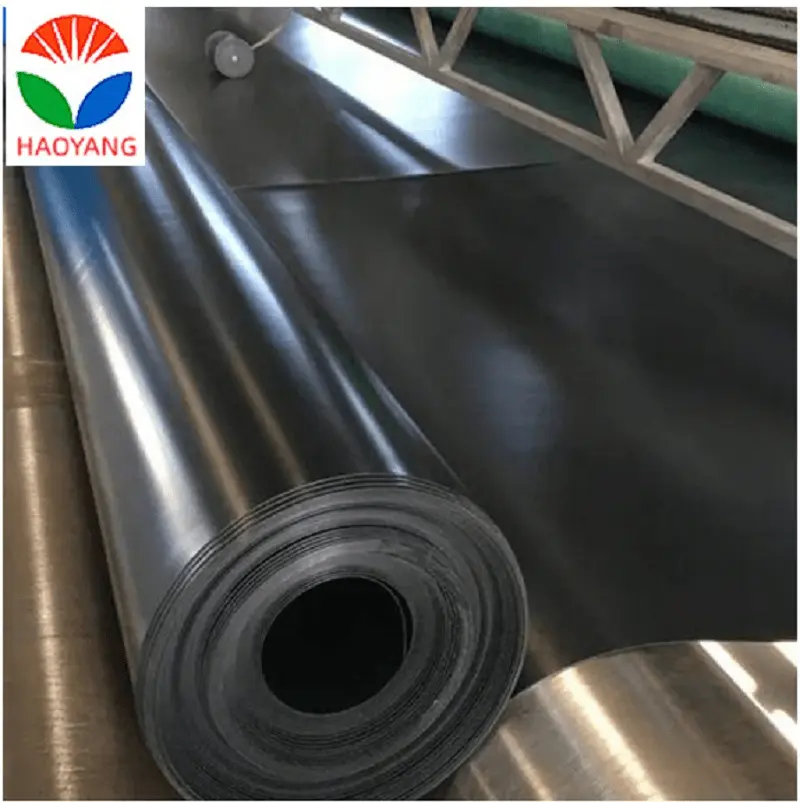As urbanization accelerates, the generation of municipal solid waste has soared, posing significant challenges for safe and efficient waste disposal. Landfilling, as a traditional and widely adopted method, necessitates technological advancements and robust environmental protection measures. In this context, geomembranes, the cornerstone of landfill liner systems, play an indispensable role in ensuring the stable operation of landfills and effectively mitigating environmental pollution, thereby demonstrating remarkable environmental value.

I. Basic Concepts and Characteristics of Geomembranes
Geomembranes, also known as impermeable membranes, are thin films made from high-molecular-weight polymer materials. They exhibit excellent impermeability, corrosion resistance, aging resistance, and substantial tensile strength. Common geomembrane materials include polyethylene (PE), polyvinyl chloride (PVC), and composite geomembranes. Processed through special techniques, these materials form a continuous waterproof barrier, effectively preventing the penetration and diffusion of water, gases, and harmful substances.

II. Applications of Geomembranes in Landfill Sites
Construction of Impermeable Layers: Laying geomembranes on the bottom and sidewalls of landfills creates a tight impermeable layer, which is crucial for preventing leachate from polluting groundwater systems. Geomembranes effectively block heavy metals, organic compounds, and other hazardous substances in leachate, safeguarding groundwater resources from contamination.
Gas Collection and Treatment: Beyond their impermeability, geomembranes serve as carriers for gas collection systems. By installing gas collection pipes on the membrane, methane and other greenhouse gases generated during waste degradation can be efficiently collected for resource recovery or safe emission, reducing greenhouse gas emissions and contributing to carbon reduction goals.
Structural Stability Enhancement: In conjunction with compacted soil on the landfill's base and slopes, geomembranes enhance the overall stability and bearing capacity of the landfill, mitigating risks associated with soil subsidence or landslides.
Isolation and Classification: In multi-layered or zoned landfills, geomembranes act as barriers between different waste types, preventing cross-contamination and improving management efficiency and resource recovery rates.

III. Environmental Value of Geomembrane Applications
Groundwater Protection: The impermeable system created by geomembranes effectively interrupts the migration of leachate into groundwater, safeguarding its cleanliness and safety, and maintaining ecological balance.
Promotion of Resource Recycling: Collecting methane gas generated in landfills for power generation or energy use not only reduces greenhouse gas emissions but also realizes waste-to-resource conversion, advancing the circular economy.
Enhanced Landfill Management: The application of geomembranes necessitates strict construction standards and subsequent maintenance, driving landfill management towards standardization, scientific rigor, and informatization, improving overall operational efficiency.
Driving Environmental Technology Innovation: As technology advances, geomembrane materials and techniques continue to innovate, such as nano-modification and self-healing technologies, further enhancing their impermeability and durability, providing more efficient and reliable solutions for environmental governance in landfills.
 (1)627251.webp)
Conclusion
In conclusion, geomembranes, as the cornerstone of landfill liner systems, have effectively addressed environmental pollution issues in waste disposal and promoted resource recycling and technological innovation in environmental protection. As society's environmental demands intensify and technology evolves, geomembrane applications in landfills will become more widespread and profound, contributing to the construction of a green, low-carbon, and circular ecological environment.
Our company's geomembranes are an excellent choice for landfill site applications, offering superior durability and impermeability to prevent leakage and protect the environment. Engineered to withstand harsh conditions, our geomembranes provide reliable containment of hazardous materials and help ensure compliance with environmental regulations. With exceptional chemical resistance and long-term performance, they are designed to maintain their integrity over time, making them a cost-effective and sustainable solution for modern landfill management. Choose our geomembranes for peace of mind and a cleaner, safer environment.
If you are interested in any of our products, fell free to contact Cathy:
Phone/Whatsapp: 0086-19863431716
Email: export2@hygeosynthetics.com
![]() 1.5mm Single-texture HDPE geomembrane.pdf
1.5mm Single-texture HDPE geomembrane.pdf

942.webp)
237.webp)
106.webp)